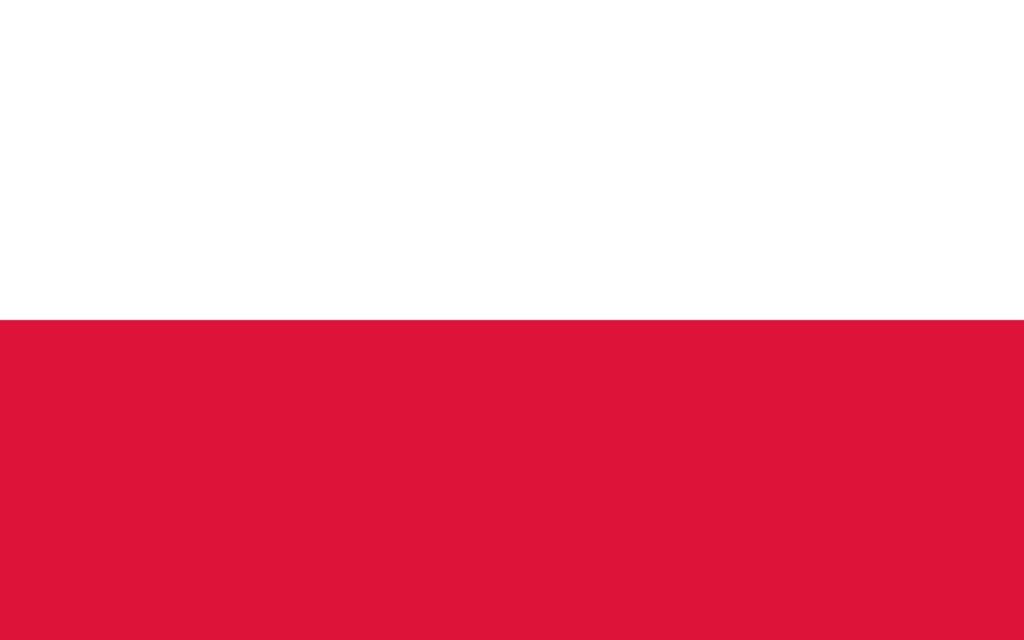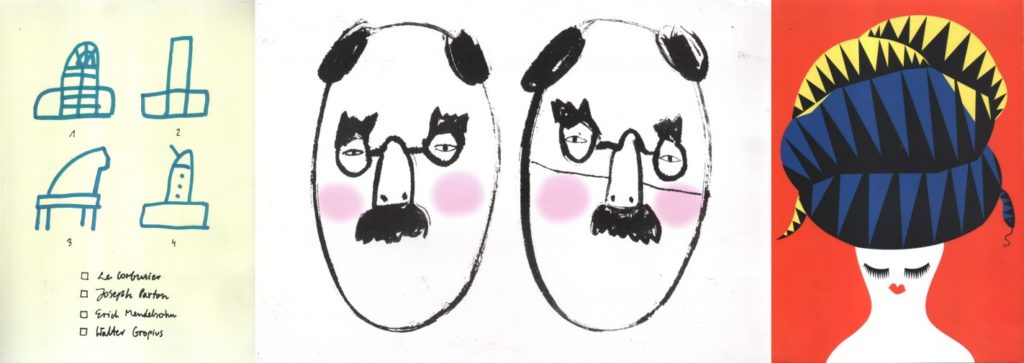Interview with Natalia Stachura, the author of Satyrykon 2017 poster
Satyrykon: It’s hard not to notice that Your jolly cactus, the character from the Satyrykon 2017 poster is running in opposite direction than our Satyrykon knave, Filip – the symbol, the logo and the monument (Zygmunt Januszawski’s design). Is it running to fall into his arms then, or rather is it suggesting in a friendly and non-pushy way it’s time to change direction?
Natalia Stachura: I believe in intense attraction of similarities, similar elements, similar thinking. In the face of today’s variety of stimuli, forming a long-lasting intellectual community basing on the abstraction and rejecting the scheme seems to be a hard work. However, it is possible as Satyrykon, with its 40-year-long tradition, has been able to form exactly such a community of thought and sensation. Referring to this year’s Satyrykon topic, “Tolerance”, the poster figure is presented in opposition, as if it was to complement the figure-soul of Satyrykon – Filip, Zygmunt Januszewski’s child. Although it might sound a bit paradoxically, tolerance is much closer in that project than a revolution, and in that reverse I was looking for enrichment of tradition rather than its rejection.
I’ve been also searching for the metaphor to express my artistic attitude to Satyrykon as to uncompromising initiative, a unique phenomenon. I believe that in art of poster, satire and graphic design we shouldn’t look for strong impulses but for strong metaphors because we got stuck in literality in our everyday life. Art, including poster, can be a sail which we can steer with this wind.
So, a bit more seriously: Can a poster change reality? E.g. can it postulate, suggest and change the event character? Can it change a growing older and noble event into a more amusing, “younger” and more modern one? I’m asking as I’ve got the feeling that You and Agata Dudek (last year’s poster author) have created a strong restoration front and the energy released from your designs might be shared not only with this year event participants but also with participants of the coming editions.
I’m glad you mentioned that energy. I do think you CAN change reality with a poster in the meaning that a poster is a moment, but it is a captive moment and in result, a lot of outstanding posters have remained up-to-date for many years, inspiring their viewers. A poster, particularly a satirical one, opens our sensitivity which is usually unexpected or even surprising for us. A moment which attracts us with its idea: colour, shape, form and this energy. The author’s smile preserved in it spreads to the viewer who’s looking at it. What follows is the joining of the text with the picture so we get to know its real context and we can link these two elements and build up meanings on it.
One poster typically talks to us in a second, it bases on some brevity of atmosphere. It is open in the sense that you match a lot of meanings to it, a little bit like optical illusions at which you look from different angles. Personally, posters which appeal to me are the ones which bring a smile on my face, which are a sort of wink of an eye to the viewer, which show trust in viewers intelligence and which form an alliance without forcing the only way of thinking. All this can hardly be obtained when completing a commercial project, in which the goal is clearly stated, although there are some examples denying this assumption, for instance, Stefan Sagmeister or Jan Młodożeniec in Poland. However, such a break of convention still remains scarce and yet I hope it’s not withdrawing. It is a stream I’d like to continue.
Coming back to the nature of the sympathetic character you created in the poster, although depicted in the invitation it covers not only thorns but also quite intriguing shapes with an enormous hat, in the poster it clearly heads towards femininity. Is it a diagnosis or a postulate for women to resolutely enter Satyrykon. How does it feel to be a woman – satirist?
You might follow that way of interpretation. The issue of femininity has always been intriguing for me in the context of art, however art as a carrier of feminism imposes limitations on interpretation level. Therefore, the wealth with which women enter Satyrykon doesn’t have to be determined by their sex. The magic top hat from which Satyrykon figure jumps out, contains a lot of new unlimited forms and content of different type – the more surprising it is, the better (and funnier).
I think the power of feminine element in art and culture in general, is its individualism. In order to survive in the world of satire, this individualism most of all requires power and determination. It might require even more power than in the “men” world which naturally feeds on individualism. The power of femininity is also hidden in illusion, the play of conventions, which makes the contact with yourself so crucial. It is power which never runs out, on the contrary, it grows with the experience and self-defining we gain. A woman-satirist and joking at women? Some may suggest that making fun of women is a shot in the foot. If it is only the foot to be sacrificed, let it go, it’s always better than the hair anyway.
Have you viewed Satyrykon’s previous posters when creating this year’s edition one? Have you tried to link somehow to its tradition or to avoid some motif repetitions? Or may be quite opposite – (as you must have seen those posters) have you tried to forget as much as possible in order not to get suggested and make all the thing as if they didn’t exist?
Frankly speaking I’ve viewed ALL the posters created so far – they represent a mosaic of Polish poster art, a collection of individualities which has been composed for 40 years. The more I viewed it, the more inspired I felt to create its continuation. I was looking for a blank page that hadn’t been filled with a drawing yet. I wasn’t afraid of running out of motives as each story can be told in a different way. I was trying to echo some already known stories in my poster but the challenge for me was to express Satyrykon in my own way.
In 2011 your work received a distinction in Satyrykon (you had also taken part in it earlier and your works had been qualified for exhibition); As an exceptionally talented young artist, you had an individual exhibition at Satyrykon gallery. What has changed in your professional life over these years? Is it hard to decide for such a radical step as setting up your own company and working completely on your own account?
A lot of things have been changing, and some of them quite dynamically, over the last six years. I admit I had been thinking of starting my own account work for about two years before I finally decided to do it. Before that I had been designing some textiles and had set up my own screen printing workshop as well as I had been working for some companies and I think any (virtually any) experience I’d gained, helped me to develop my attitude to creating. I come from Sopot but I spent a lot of time all over Poland. I lived in Poznań, Berlin, Warszawa, Wrocław and two years ago I came back to Tricity and set up my own business. Thanks to the experience I gathered it was easier for me to define what I want to devote myself to. Currently, I professionally deal with publishing design. It is pretty analytical work in which I take into consideration legibility and comfort of reception. I’ve always strived for minimalism in my designs so following “less is more” principle in working over my designs is very developing for me. To sum up the route I have covered so far, in some sense, I search for a kind of short-cut in every project – a sort of visual haiku.
You were a student at two universities. What do you owe to them? Your masters?
People I could call my masters always understood my desire to experiment and never imposed anything on me. I like experiments so I’ve always put intuition and feeling over cohesion of a so called “creative output”.
I studied for two years at the Academy of Fine Arts in Gdańsk and then for three years at University of the Arts Poznan. It was a long time ago… Classes with Jacek Staniszewski, Jadwiga and Zygmunt Okrassa in Gdańsk woke up a rebellious and derisive note in my young soul. In Poznań I felt strongly inspired to act by the experience, curiosity and sense of observation of the people whom I met there. Among others, I can mention such lecturers as Grzegorz Nowicki, Mirosław Adamczyk, Wojciech Müller. Their openness triggered the release of loads of my creative energy.
Apart from my closest ones, not mentioned here, I surely deserve my current attitude to creation to the masters whom I had no opportunity to meet in person but “only” through their projects. This attitude is based on assumption that as creators we are constantly in move, we constantly create our own Wunderkammer by collecting what is valuable, interesting and unbelievable. We collect our own mirabilia of which we tell in our projects. They change with us, with our experiences and they mature similarly to us. You never know what’s going to jump out of the top hat…
on the behalf of Satyrykon – Beata Zborucka




